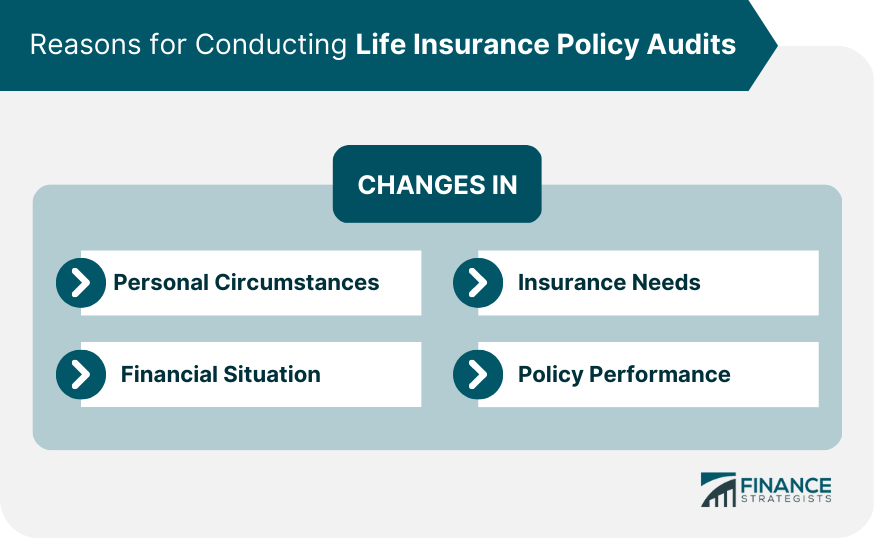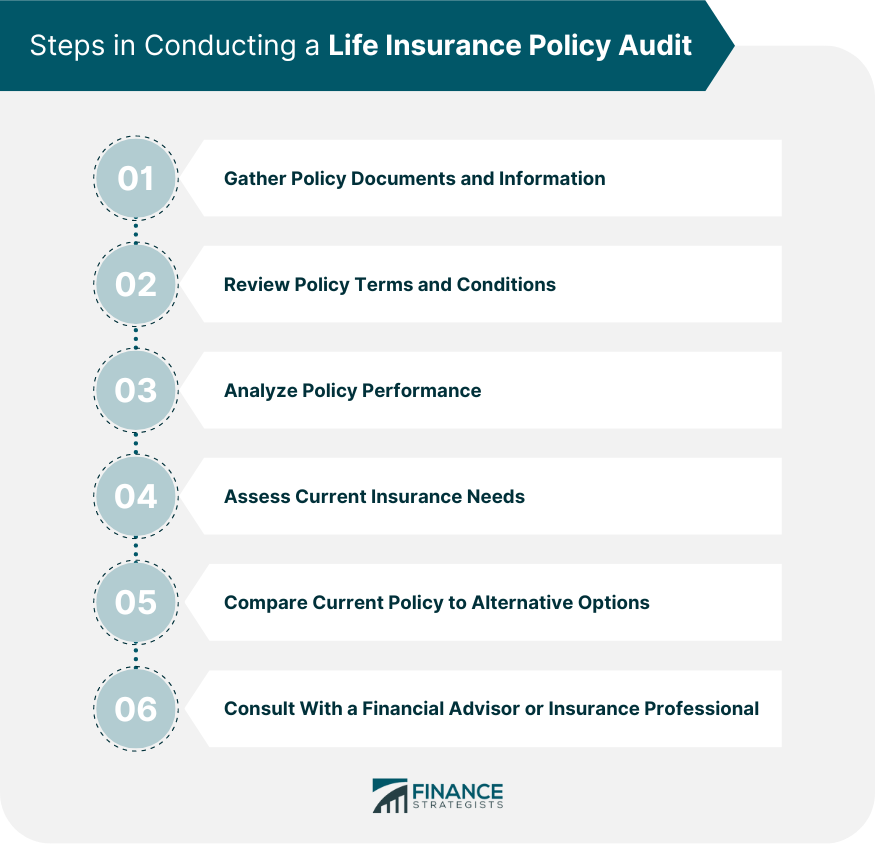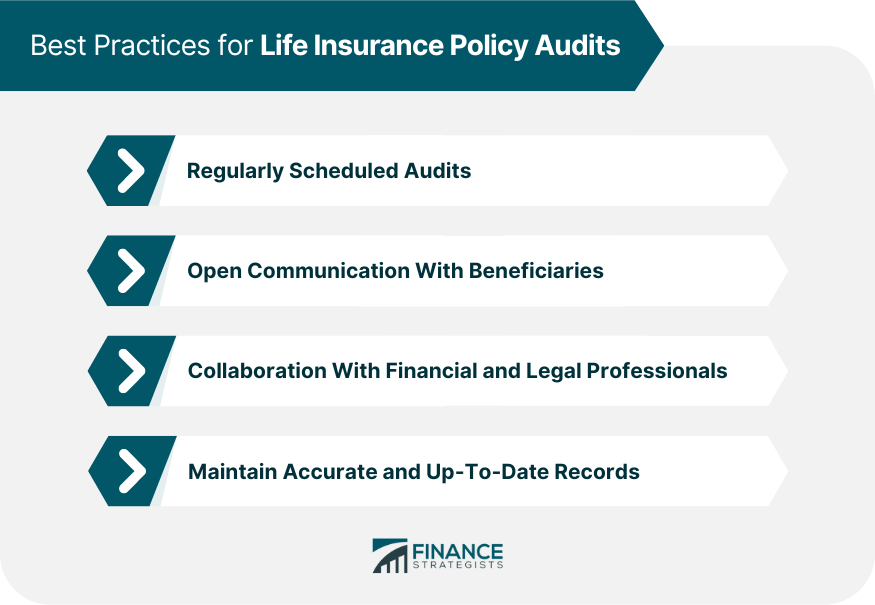Life insurance is a financial tool that provides protection for your loved ones in the event of your passing. It is designed to provide a death benefit to the beneficiaries of the policyholder, which can be used to cover expenses such as funeral costs, outstanding debts, and ongoing living expenses. There are several types of life insurance policies available, including term life insurance, whole life insurance, and universal life insurance. Over time, your life insurance needs may change, making it necessary to evaluate your existing policy. Life insurance policy audits are a systematic review of your life insurance policy, designed to ensure that it remains aligned with your changing needs and circumstances. Major life events can significantly impact your life insurance needs. Events such as marriage, divorce, or the birth or adoption of a child may necessitate a review of your existing policy to ensure that your coverage is adequate for your new circumstances. Your financial situation can also influence your life insurance needs. For example, an increase or decrease in income, an inheritance or windfall, or the accumulation of debt or filing for bankruptcy can affect the amount of coverage you require. As your life evolves, so do your insurance needs. You may need to adjust your policy to account for new dependents, business or property ownership, or charitable giving and estate planning. The performance of your life insurance policy may change over time, with factors such as underperforming investments, rising premiums, or reduced benefits necessitating a policy review. Begin the audit process by gathering all relevant policy documents and information. This includes policy statements, premium payment records, and any correspondence with your insurance provider. Carefully review the terms and conditions of your policy, paying close attention to coverage amounts, premium payments, riders, and exclusions. Assess the performance of your policy by examining investment returns, policy changes, and guaranteed and non-guaranteed benefits. Evaluate your current insurance needs by considering your personal and financial circumstances, as well as any changes that may have occurred since you last reviewed your policy. Investigate alternative life insurance options, such as term life insurance, whole life insurance, or universal life insurance, to determine if a different type of policy might better suit your needs. Consult with a financial advisor or insurance professional to gain insights and recommendations for any necessary policy adjustments. Your policy audit may reveal the need for adjustments, such as increasing or decreasing coverage, adding or removing riders, or adjusting premium payments. In some cases, it may be more beneficial to replace your existing policy with a more suitable one, or to combine or consolidate multiple policies. If your policy is no longer meeting your needs, you may choose to surrender it or allow it to lapse. Be aware of the potential tax implications and options for cash value surrender or policy loans. If your audit determines that your policy meets your current needs and its performance is satisfactory, no action may be required. Conduct life insurance policy audits on a regular basis, ideally every few years or following significant life events. Maintain open communication with your policy beneficiaries, ensuring they are informed of any changes to your policy. Work closely with financial and legal professionals to ensure that your policy audit is thorough and takes into account all relevant factors and potential consequences. Keep accurate and up-to-date records of your policy documents, premium payments, and any communication with your insurance provider to facilitate future policy audits. Life insurance policy audits are a crucial aspect of ensuring that your policy remains aligned with your changing needs and circumstances. Conducting regular policy audits can help you identify any gaps in coverage, opportunities for cost savings, or potential upgrades. The audit process involves gathering policy documents and information, reviewing policy terms and conditions, analyzing policy performance, assessing current insurance needs, comparing current policy to alternative options, and consulting with financial advisors or insurance professionals. Potential outcomes of a life insurance policy audit include policy adjustments, policy replacement, policy surrender, or no action required. Best practices for conducting a life insurance policy audit include regularly scheduled audits, open communication with beneficiaries, collaboration with financial and legal professionals, and maintaining accurate and up-to-date records. By following these best practices, you can ensure that your life insurance policy continues to provide the financial security your loved ones deserve.Life Insurance Overview
Reasons for Conducting Life Insurance Policy Audits

Changes in Personal Circumstances
Changes in Financial Situation
Changes in Insurance Needs
Changes in Policy Performance
Steps in Conducting a Life Insurance Policy Audit

Gather Policy Documents and Information
Review Policy Terms and Conditions
Analyze Policy Performance
Assess Current Insurance Needs
Compare Current Policy to Alternative Options
Consult With a Financial Advisor or Insurance Professional
Potential Outcomes of a Life Insurance Policy Audit
Policy Adjustments
Policy Replacement
Policy Surrender or Lapse
No Action Required
Best Practices for Life Insurance Policy Audits

Regularly Scheduled Audits
Open Communication With Beneficiaries
Collaboration With Financial and Legal Professionals
Maintain Accurate and Up-to-Date Records
The Bottom Line
Life Insurance Policy Audits FAQs
Life insurance policy audits are systematic reviews of your life insurance policy to ensure it remains aligned with your changing needs and circumstances. These audits are essential for maintaining financial security and peace of mind for both policyholders and beneficiaries.
It is recommended to conduct life insurance policy audits every few years or following significant life events, such as marriage, divorce, the birth or adoption of a child, changes in income, or the acquisition of new assets.
The key steps in conducting life insurance policy audits include gathering policy documents and information, reviewing policy terms and conditions, analyzing policy performance, assessing current insurance needs, comparing the current policy to alternative options, and consulting with a financial advisor or insurance professional.
Life insurance policy audits can result in policy adjustments (e.g., increasing or decreasing coverage, adding or removing riders, or adjusting premium payments), policy replacement (e.g., replacing the existing policy with a more suitable one or consolidating multiple policies), policy surrender or lapse, or no action required if the policy meets current needs and has satisfactory performance.
Best practices for life insurance policy audits include regularly scheduled audits, maintaining open communication with beneficiaries, collaborating with financial and legal professionals, and maintaining accurate and up-to-date records.
True Tamplin is a published author, public speaker, CEO of UpDigital, and founder of Finance Strategists.
True is a Certified Educator in Personal Finance (CEPF®), author of The Handy Financial Ratios Guide, a member of the Society for Advancing Business Editing and Writing, contributes to his financial education site, Finance Strategists, and has spoken to various financial communities such as the CFA Institute, as well as university students like his Alma mater, Biola University, where he received a bachelor of science in business and data analytics.
To learn more about True, visit his personal website or view his author profiles on Amazon, Nasdaq and Forbes.











